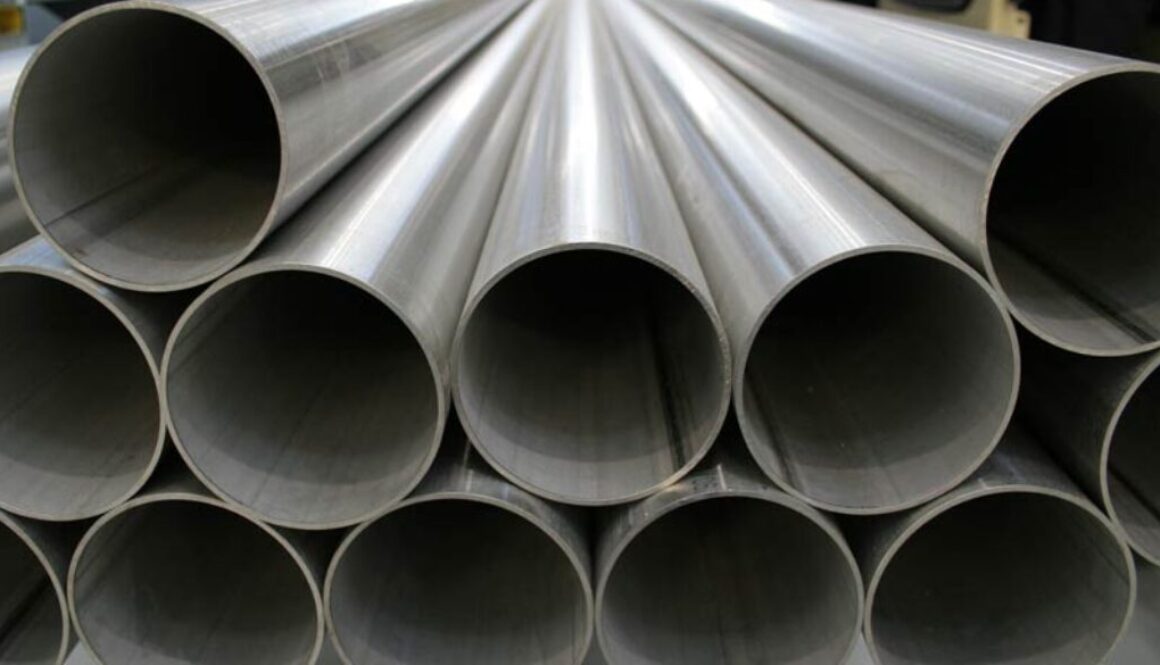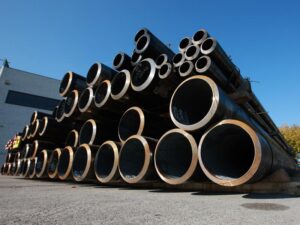Piping for industrial plant: how to choose it?
How to choose piping for industrial plant?
Choosing piping certainly deserves a prominent place among the most critical tasks for those working in industrial plant.
An efficient industrial plant is a system in which energy is well conveyed and distributed, sprinkled smoothly throughout the circuit, so as to achieve constant production rates without costly investment losses.
For this to happen, a well-designed and selected piping network is needed, where the energy exchange triggered by the pump results distributed in a fluid transport system that can be process, service or discharge type.
Let us see in this article how to navigate the selection of the most appropriate piping.
Choosing piping for industrial plant: is it really that simple?
Given the importance of a good industrial piping network in one’s plant, let us now try to understand the criteria that move its selection.
Choosing industrial piping is a far from obvious task, not only vital for the production of one’s industrial plant, but also for its safety.
Each of the fluids transported, travels at a specific temperature and pressure.
The nature of the fluid and the type of plant are therefore the most important elements to consider when choosing piping, but not the only ones.
The cost/benefit calculation, though, is fundamental, since we are talking about industrial plants.
This is a calculation that, obviously, must contemplate economic benefits in the choice and installation of the piping system.
Choosing piping for industrial plant: economic criteria
Therefore, a profitable return on investment, in terms of efficiency and productivity, is one of the main criteria to consider.
When choosing industrial piping, there are two costs to consider:
- Diameter: a larger diameter is associated with a higher cost of the pipeline;
- Energy costs related to transporting and pumping the fluid.
The cost trend is measured in association with the diameter of the pipe.
In general, we can say that while the material cost of the pipeline becomes higher as the diameter increases, the energy cost decreases with a larger diameter, significantly reducing maintenance costs.
A fact that takes on significant importance where pipelines are intended for a hostile environment, where material transport takes place at high pressures.
Piping for industrial plant: the material to be transported
From this we immediately understand how important the nature of the material being transported is.
This consideration is moved on the basis of the following elements:
- Fluid to be transported: from the chemical point of view it must be compatible with the type of pipe for industrial plant;
- Pressure: it must be ensured that the operating pressure always records a value equal to or greater than the operating system’s; especially pressure peaks and pulsating frequencies must be evaluated. SAE J1927 provides a valid methodology for calculating the life of a hose against a specific application.
- Static and transient temperature: must not exceed what the hose can tolerate.
Choosing industrial piping based on the outdoor environment
It is also important to consider the adversities arising from the external environment and the mechanics of the industrial plant itself: conditions that can subject pipes to risks of deterioration and damage.
In this regard, they should be properly evaluated:
- Abrasion resistance: impacts and rubbing against metal parts and other pipes can lead to damage to the pipes. In this case, it is useful to have industrial piping with a protective coating.
- Heat sources: where the passage of the piping occurs near heat sources – collectors and manifolds – it is advisable to consider applying protective systems such as protective sheath.
- Electrical conductivity: some fluids generate, during the passage, a release of electrostatic charges. In this case, a choice of industrial piping with a conductivity capable of discharging electrostatic energy buildup to the ground should be made.
- Environmental conditions and agents that can cause degradation and wear of piping: ultraviolet rays, salt water, pollution, dust, etc…
Piping for industrial plant: minimum bending radius
Another aspect that greatly affects the longevity of the hose is the bending angle.
The SAE J343 standard defines the minimum bending radius, below which the pipe can undergo rapid degradation, even bursting.
Welded and seamless pipes
All of the above can have different weights depending on which type of pipe is chosen.
In the world of piping for industrial plants, two categories can be used.
- Welded pipes. These are obtained by processing laminated material: this is drawn and compressed using special cages and presses and then welded at the edges. The welding methods are different. We can have either a helical or a longitudinal weld; the beads are removed using deburring machines.
- Seamless pipes: in this case, we are talking about higher-quality products. These are seamless pipes, usually obtained from a billet, by processing methods such as hot rolling and extrusion. These are the pipes most commonly used in industrial plants: for the same material and dimensions, they boast 20% higher working pressures than welded pipes, thus being able to withstand high pressures.
Piping for industrial plant from Pantalone SRL
Now that we know all about how to go about choosing piping for industrial plant, how about contacting us for a quotation request?
We have a large stock of piping dedicated to various applications and the transport of different materials.
The sizes we handle are from stock from 3/8″ to 24″, larger sizes are available on request.
The pipe categories we handle are diverse:
- high-temperature pipes ASTM A106 GR.B or ASTM A335,
- low-temperature pipes ASTM A333 GR.B,
- oil & gas pipes API 5L,
- carbon steel pipes for boilers EN 10216-2,
- corrosion-resistant pipes TP304 and TP316 and many others.
Furthermore, thanks to our logistics partner Autotrasporti DSG we can deliver large quantities of pipes every week throughout Italy.
Contact us and put us to the test.
Visit our website to learn more and discover all the hose types we can offer.


